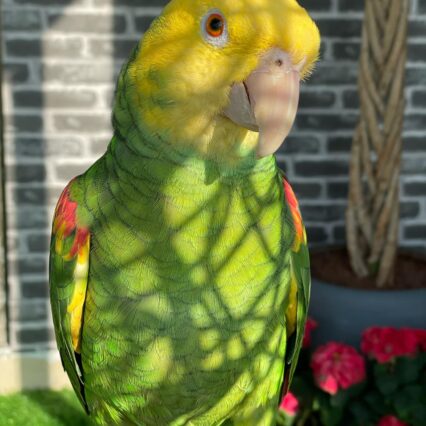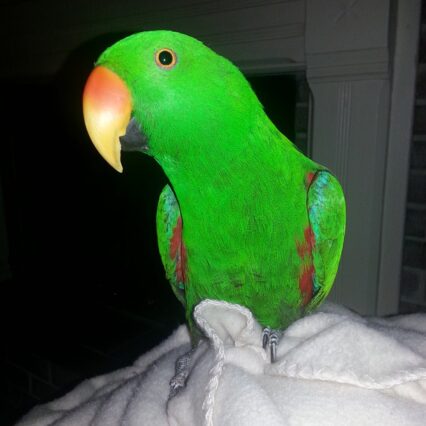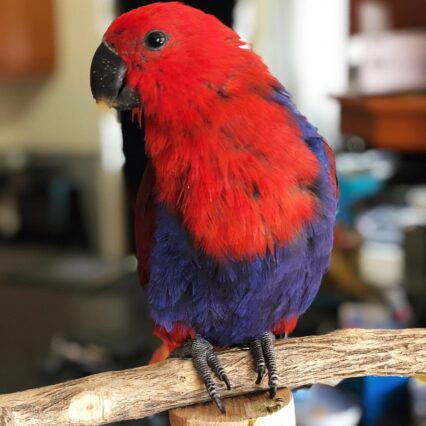- May 16, 2024
Training Parrots to Do Tricks: 10 Techniques for Marvelous Performances
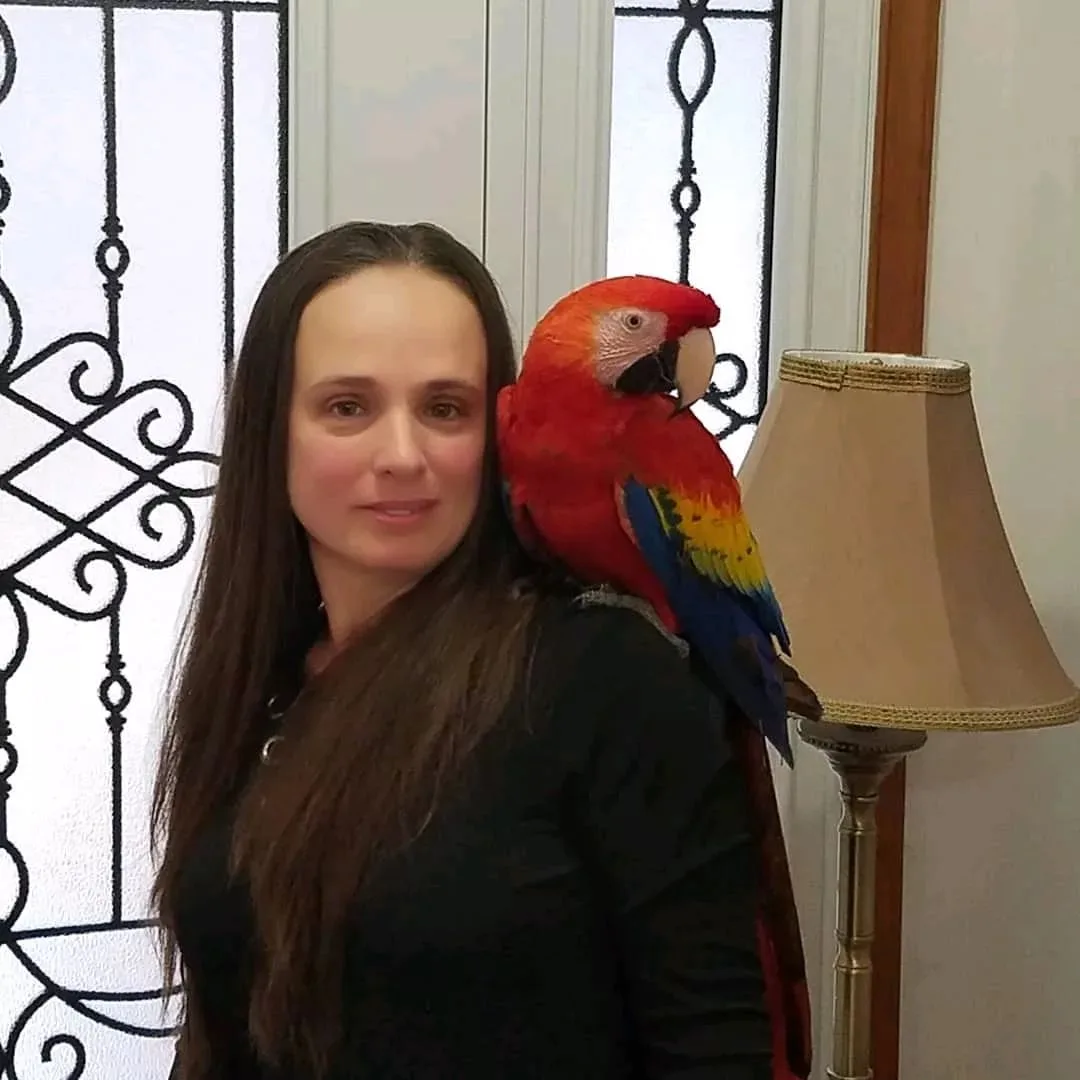
Ready to amaze your friends with your parrot’s impressive tricks? Training parrots to do tricks can be a fun and rewarding experience. From teaching them to wave hello to mastering complex routines, the possibilities are endless. In this listicle, we’ll share expert tips and techniques to help you train your feathered friend like a pro.
Discover the secrets to successful parrot training, learn how to keep your bird engaged during sessions, and unlock their full potential. Get ready to witness your parrot’s intelligence and agility in action as they perform jaw-dropping tricks that will leave everyone in awe. Scroll down for reviews of our top picks!
Explore our selection of vibrant parrots for sale. Adopt a healthy parrot today!
-
Sale Product on sale
 My Name is OLLIE, Red Female Canary. 20% Off Today – Don’t Miss Out!
My Name is OLLIE, Red Female Canary. 20% Off Today – Don’t Miss Out!$250.00Original price was: $250.00.$200.00Current price is: $200.00. -
Sale Product on sale
 My Name is OLIVER, Yellow Headed Male Amazon Parrot. 20% Off Today – Don’t Miss Out!
My Name is OLIVER, Yellow Headed Male Amazon Parrot. 20% Off Today – Don’t Miss Out!$1,600.00Original price was: $1,600.00.$1,400.00Current price is: $1,400.00. -
Sale Product on sale
 Buy LAGO, Female Electus. 20% Off Today – Don’t Miss Out! Limited Time:
Buy LAGO, Female Electus. 20% Off Today – Don’t Miss Out! Limited Time:$1,100.00Original price was: $1,100.00.$900.00Current price is: $900.00.
Key Takeaways
- Use positive reinforcement training techniques like clicker training and target training to teach your parrot tricks effectively.
- Implement flight recall training and harness training for safety and outdoor activities with your parrot.
- Teach mimicry by modeling sounds and words for your parrot to imitate.
- Follow a structured trick progression plan to build on your parrot’s skills gradually.
- Engage your parrot in enrichment activities to keep them mentally stimulated and happy.
- Socialize your parrot regularly and maintain a consistent practice schedule for continued learning and bonding.
1. Positive Reinforcement Training
Positive reinforcement training is a highly effective method for training parrots to do tricks. By using treats as rewards, you can encourage desired behaviors in your feathered friend. It’s crucial to praise the parrot immediately after it successfully performs a trick, reinforcing the positive association with the action. Consistency plays a vital role in this training approach, as regular practice and reinforcement help solidify the learned behaviors.
This training method focuses on rewarding good behavior rather than punishing mistakes, creating a positive and engaging learning environment for your pet parrot. Through consistent use of treats and praise, you can effectively teach your parrot various tricks and commands while strengthening your bond with them.
2. Clicker Training
Clicker training is a powerful tool in training parrots to do tricks. By using a clicker as a signal for correct behavior, you can effectively communicate with your feathered friend. This method works by marking the exact moment a trick is performed, helping the parrot understand which action is being rewarded. The precision of the click sound helps in reinforcing positive behavior and speeds up the learning process for parrots. It allows for clear communication between the trainer and the bird, making it easier for the parrot to grasp what is expected of them during training sessions.
Clicker training offers a structured approach to teaching new behaviors and shaping existing ones, enhancing the bond between the parrot and its owner through positive reinforcement techniques.
3. Target Training
Target training is a fundamental technique in training parrots to do tricks. By teaching the parrot to touch a target stick with its beak or foot, you establish a clear communication method for desired behaviors. This method serves as the building block for more advanced tricks, enhancing the bird’s cognitive abilities and strengthening your bond.
Key Features:
- Establishes clear communication between the trainer and the parrot.
- Forms the basis for teaching complex tricks effectively.
- Enhances the parrot’s problem-solving skills and mental agility.
Insights:
- Gradually increasing the distance between the parrot and the target stick challenges the bird to improve accuracy and focus.
- Target training can lead to quicker learning of other tricks due to the established foundation in communication and understanding.
4. Flight Recall Training
Flight recall training is essential for safety outdoors. Begin in a secure, indoor space to ensure the parrot’s comprehension of the command. Gradually increase the distance between you and your bird during training sessions.
Use positive reinforcement techniques such as treats or verbal praise to reinforce desired behavior. Ensure that your parrot associates the recall command with returning to you promptly.
Incorporate ram into your training routine, gradually increasing the distance over time. Consistent practice and patience are key to successful flight recall training.
Remember that each parrot learns at its own pace, so be patient and persistent throughout the training process. Effective flight recall training can enhance your bond with your feathered friend while keeping them safe during outdoor excursions.
5. Harness Training
Harness training is crucial for outdoor adventures with your parrot. It enables you to take your feathered friend outside safely while preventing escapes.
- Gradual Introduction: Start by getting the parrot comfortable with wearing a harness indoors before venturing outside.
- Patience is Key: Proceed slowly, allowing your parrot to adjust at its own pace to avoid stress.
- Safety Measure: Harness training acts as a safety precaution, ensuring your parrot stays secure during outdoor activities.
Harness training offers a unique opportunity to bond with your parrot in various environments while keeping them safe and secure. Remember, patience and consistency are essential for successful harness training sessions.
6. Teaching Mimicry
Parrots, known for their exceptional mimicking abilities, make training in this area fascinating. Starting with basic sounds or words is crucial when teaching mimicry to parrots. Consistent repetition plays a vital role in reinforcing the learning process.
- Parrots’ natural inclination towards mimicry makes this training engaging.
- Basic sounds and words serve as the foundation for mimicry training.
- Repetition is key to solidifying the mimicry skills of parrots.
7. Trick Progression
Starting with basic tricks is crucial when training your parrot. Begin with simple commands like “step up” and “turn around” to establish a foundation for more complex behaviors. As your parrot grasps these initial tricks, gradually introduce more advanced maneuvers to keep them engaged and challenged.
Building on previously learned tricks is key to a successful training progression. For example, once your parrot masters stepping up onto your hand, you can incorporate this action into other tricks like waving or high-fiving. This approach helps reinforce existing behaviors while adding new elements to their repertoire.
Monitoring your parrot’s comfort level throughout the training process is essential. Adjust the difficulty of the tricks based on their response and body language. By ensuring that the challenges are within their capabilities, you can maintain a positive and rewarding training experience for your feathered friend.
8. Enrichment Activities
Enrichment activities are essential for keeping your parrot mentally stimulated and happy. Providing a variety of toys and puzzles can engage their minds and prevent boredom. Rotate these activities regularly to maintain interest and promote a healthy mind in your feathered friend.
To ensure optimal enrichment, consider the following:
- Toy Variety: Offer a range of toys such as puzzle feeders, foraging toys, and chewable items.
- Interactive Games: Engage your parrot with interactive games like teaching them to solve simple puzzles or play hide-and-seek.
- Training Sessions: Incorporate training sessions into their routine to stimulate their cognitive abilities.
9. Socialization Techniques
Encourage interaction with other household members to enhance social skills.
Arrange playdates with other parrots to promote socialization and prevent behavioral issues.
Socialization techniques are crucial for the overall well-being of your parrot.
10. Consistent Practice Schedule
Establish a consistent daily training routine for the parrot to enhance performance. Regular practice plays a crucial role in reinforcing learned tricks and behaviors, ensuring that the parrot retains and improves its skills over time. Consistency in the practice schedule is essential for long-term success, helping the parrot master various tricks effectively.
By incorporating a structured training plan into your daily routine, you can provide the necessary time and attention needed for your parrot’s development. This consistent approach not only helps in skill acquisition but also strengthens the bond between you and your feathered friend.
Remember, starting early with a regular practice regimen sets a solid foundation for your parrot’s learning journey, leading to impressive results in the future.
Closing Thoughts
You’ve now learned various techniques for training your parrot to do tricks, from positive reinforcement and clicker training to flight recall and mimicry. Consistent practice and patience are key in helping your feathered friend master these skills. Remember, each bird is unique, so adapt these methods to suit your parrot’s personality and preferences. By incorporating enrichment activities and socialization techniques into your training routine, you can strengthen the bond with your pet while keeping them mentally stimulated and happy.
Now it’s time to put your newfound knowledge into action. Create a structured practice schedule, mix in different tricks, and watch as your parrot flourishes. With dedication and the right approach, you’ll be amazed at what your clever companion can achieve. Keep up the good work, and enjoy the journey of training your parrot to be a star performer!
Explore our selection of vibrant parrots for sale. Adopt a healthy parrot today!
-
Sale Product on sale
 My Name is POPIN, Male Pionus. 20% Off Today – Don’t Miss Out!
My Name is POPIN, Male Pionus. 20% Off Today – Don’t Miss Out!$800.00Original price was: $800.00.$600.00Current price is: $600.00. -
Sale Product on sale
 Buy VAN GOGH, Male Flame Macaw. 20% Off Today – Don’t Miss Out! Limited Time:
Buy VAN GOGH, Male Flame Macaw. 20% Off Today – Don’t Miss Out! Limited Time:$1,350.00Original price was: $1,350.00.$1,080.00Current price is: $1,080.00. -
Sale Product on sale
 Buy SYLVANAS, Male Electus. 20% Off Today – Don’t Miss Out! Limited Time:
Buy SYLVANAS, Male Electus. 20% Off Today – Don’t Miss Out! Limited Time:$1,100.00Original price was: $1,100.00.$900.00Current price is: $900.00.
Frequently Asked Questions
How effective is positive reinforcement training for teaching parrots tricks?
Positive reinforcement training is highly effective for teaching parrots tricks as it rewards desired behaviors, making learning enjoyable and encouraging repeat performances. This method strengthens the bond between you and your parrot while promoting a positive environment for skill development.
Is clicker training suitable for all types of parrots?
Clicker training is a versatile technique that can be adapted to suit various parrot species. By associating the sound of a clicker with rewards, you can effectively communicate with your parrot during training sessions, regardless of its breed or size.
What are the benefits of incorporating target training into a parrot’s trick repertoire?
Target training helps parrots focus on specific objects or locations, aiding in teaching complex tricks and behaviors. By using a target stick or object, you can guide your parrot through movements and actions, leading to improved coordination and cognitive stimulation.
How does flight recall training contribute to a parrot’s overall well-being?
Flight recall training allows parrots to exercise their natural flying abilities in a safe environment. This not only promotes physical health but also boosts mental stimulation and confidence in your bird. It enhances the bond between you and your parrot through shared activities.
Why is consistency crucial in establishing a practice schedule for teaching parrots tricks?
Consistent practice schedules help reinforce learned behaviors and prevent regression in trick performance. By setting aside dedicated time each day for training sessions, you create a structured routine that fosters steady progress and reinforces positive habits in your parrot’s learning journey.
Tags
What do you think?
Related Articles

Find Parrots for Sale in Aurora IL: Top 5 Must-Visit Spots
Finding the perfect parrot in Aurora, IL, is an exciting adventure for bird lovers. This city offers various options for
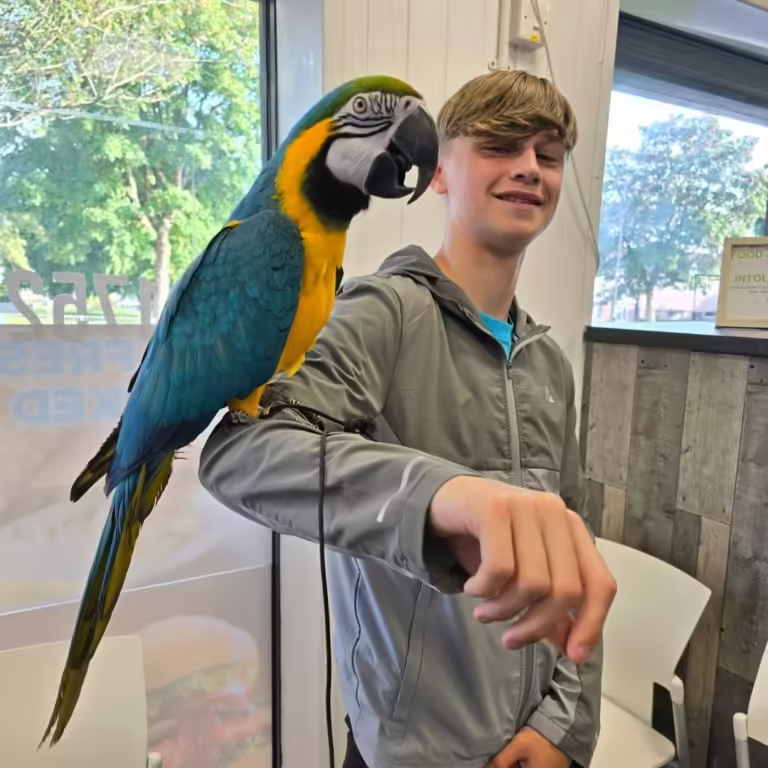
Find Parrots for Sale in Trenton NJ: Top 5 Must-See Spots!
Finding the perfect parrot can be a fun adventure. Trenton, NJ, offers plenty of options for bird lovers. From local
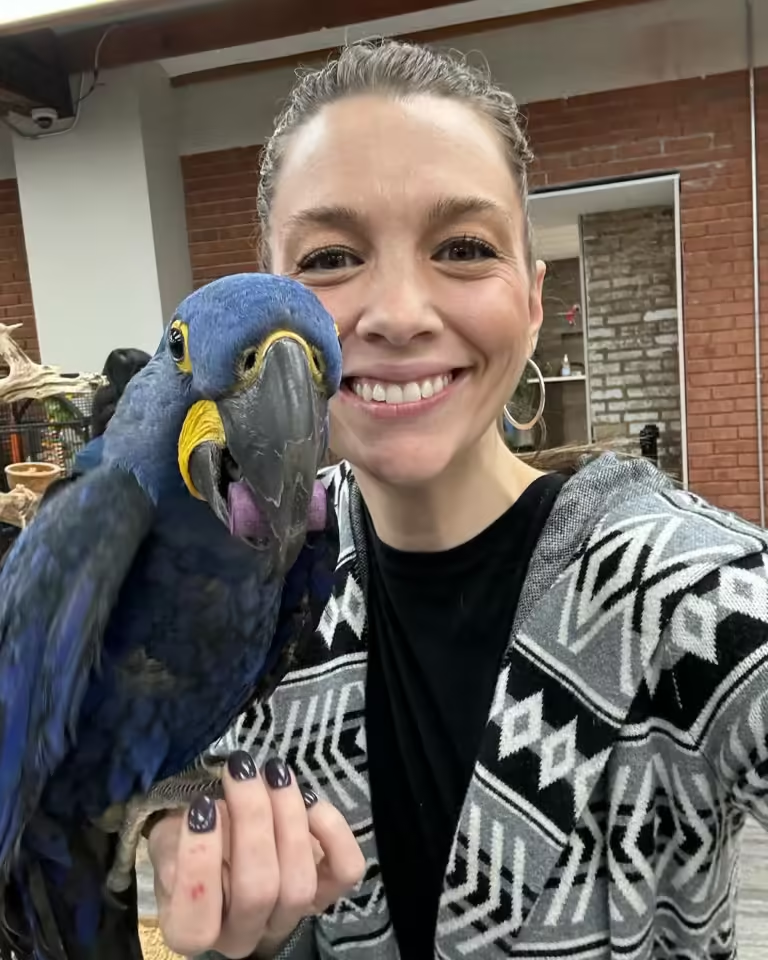
Find Parrots for Sale in Woodbridge Township NJ: Top 5 Must-See Spots!
Finding the perfect parrot can be a fun adventure. Woodbridge Township, NJ offers plenty of options for bird lovers. From

